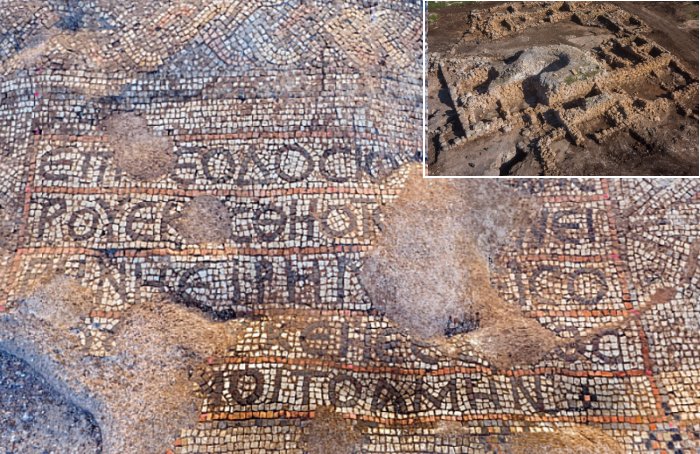Conny Waters - AncientPages.com - A few years back, Rosh Ha‘ayin unveiled some remarkable historical treasures.
Photo credit: Assaf Peretz, Israel Antiquities Authority, and Griffin Higher Photography.
An imposing farmstead from First Temple era, a monastery, and a church adorned with vibrant mosaics and intriguing inscriptions were discovered by archaeologists from the Israel Antiquities Authority (IAA) and thus, enriched the area's historical and cultural legacy.
The discovery includes an impressive large 2,700-year-old farmhouse, and a 1,500-year-old church decorated with colorful mosaics and inscriptions.
Photo credit: Assaf Peretz, Israel Antiquities Authority, and Griffin Higher Photography.
Amit Shadman, Israel Antiquities Authority director who led the excavation said that “the 2,700-year-old, large farmhouse comprised 24 rooms built around a central courtyard, and its walls were preserved for over two meters. A large storage silo in the courtyard served to store grain, as grain production was a major component in the rural-agricultural system in the region. This understanding is further consolidated by the many millstones for grinding the grain into flour that we found in the excavation. We also uncovered simple rock-cut olive presses for pressing olive oil.”
Other interesting findings unearthed at the site include two 4th-century BCE silver coins. On one of them is depicting the goddess Athena and the other, shows a nocturnal Athene owl. Both artifacts were found in the farm building.
Photo credit: Assaf Peretz, Israel Antiquities Authority, and Griffin Higher Photography
The farm and others of its kind operated for numerous centuries until the area was deserted during the Hellenistic period. Subsequently, in the fifth century CE, a fresh wave of settlement drastically altered the topography of this region.
Christianity gained momentum in the Byzantine period and was now dominant in the area with impressive churches and rural monasteries.
The monastery was built on one of the slopes in the Byzantine period and comprised a church, an olive press, living rooms, stables with mangers, and water troughs.
The church boasted floors adorned with vibrant mosaics featuring a mix of geometric designs and various other patterns.
There were also found numerous Greek inscriptions, of which one was credited to a Priest named Theodosius - a popular name during that era.
“This building was erected under Theodosius the priest. Welcome to those entering, farewell to those departing, Amen.”
Written by Conny Waters - AncientPages.com Staff Writer








